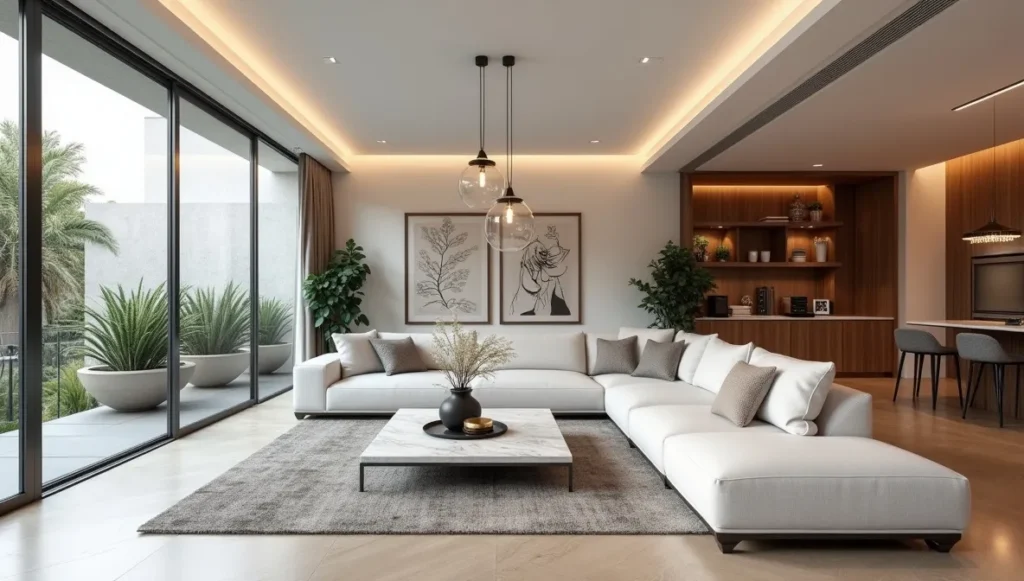- The Unexpected Magic of Boho Scandi: Why This Fusion Style is Taking Over Modern Homes - September 2, 2025
- Japandi Design: Why This Japanese-Scandinavian Hybrid Has Taken Over My Client Projects - September 2, 2025
- The Real Story Behind Transitional Interior Design: Why It Actually Works - September 1, 2025
Table of Contents
So here’s the thing – I’ve been doing interior design for twenty years now, and I still cringe when I think about some of my early projects. There was this one house in 2006 where I basically turned the living room into an Apple store. All white. Chrome everywhere. The homeowner’s five-year-old took one look and asked if we were moving.
That’s when I realized I didn’t actually understand modern design. I was just copying what I saw in magazines.
Real modern design? It’s messier than the photos suggest. It’s about creating spaces that work for actual humans – people who spill coffee, have arguments, throw birthday parties, and need somewhere to put their stuff.
The Basics (That Took Me Years to Figure Out)
Back in the early 1900s, architects got fed up with Victorian excess. All those carved chair legs, heavy curtains, wallpaper with seventeen different patterns. They wanted something cleaner, more honest about materials and function. The idea was revolutionary: form follows function. Don’t add decoration just for the sake of it. Let the beauty come from good proportions and quality materials.
Sounds simple, right? It’s not. I spent my first decade thinking modern meant minimalist. Clients would hire me and I’d strip their rooms down to almost nothing. Then they’d complain their homes felt cold, unwelcoming, like no one lived there. Turns out, there’s a big difference between clean design and empty rooms.
What Actually Makes a Space Modern
Open Floor Plans (When They Make Sense)
Everyone wants open floor plans because they think it’s modern, but I’ve seen so many disasters where people just removed walls without thinking. Your kitchen doesn’t need to be visible from every angle if you’re someone who cooks messy meals. Some walls actually help. The trick is knowing which ones. In one of my client’s my house, I kept the wall between kitchen and entryway but opened everything else. Why? Because when people walk in, I don’t want them staring at dirty dishes. But I do want to chat with guests while I’m cooking. It’s about lifestyle, not trends.
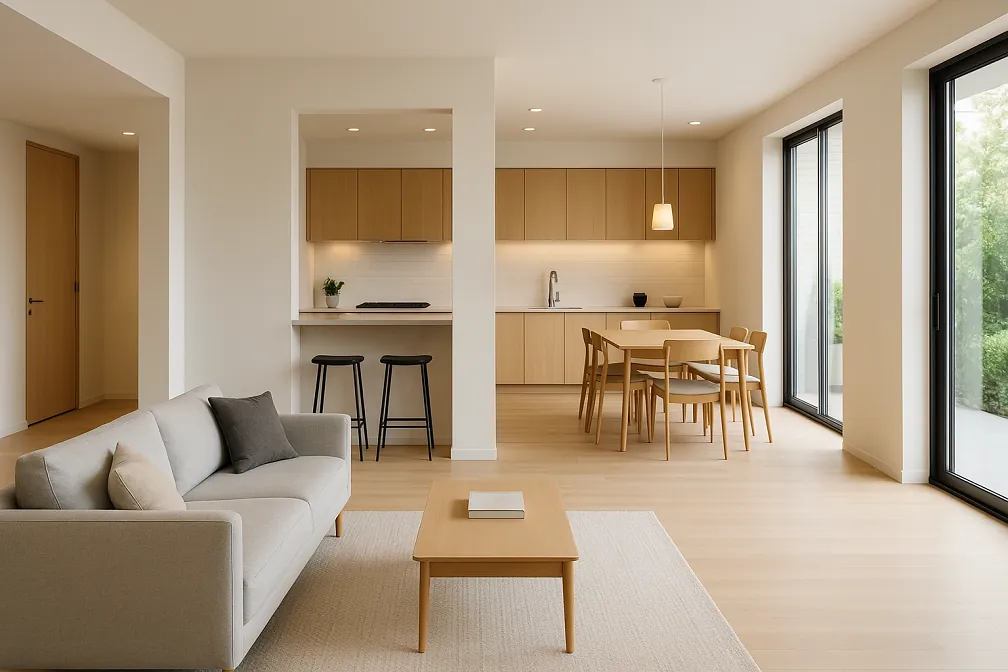
Materials That Age Well
Here’s what I use constantly: walnut, oak, steel, concrete, glass. These materials look better after five years than they do brand new. Avoid anything trying to look like something else. Avoid laminate pretending to be wood, vinyl pretending to be stone, and other such unauthentic and fake stuff. Modern design is about honesty, and fake materials scream “budget compromise.” That said, budget is real. I’d rather see someone use painted MDF well than struggle with expensive materials they can’t afford to install properly. Checkout this MDF kitchen I delivered for my client who had budget constraints.
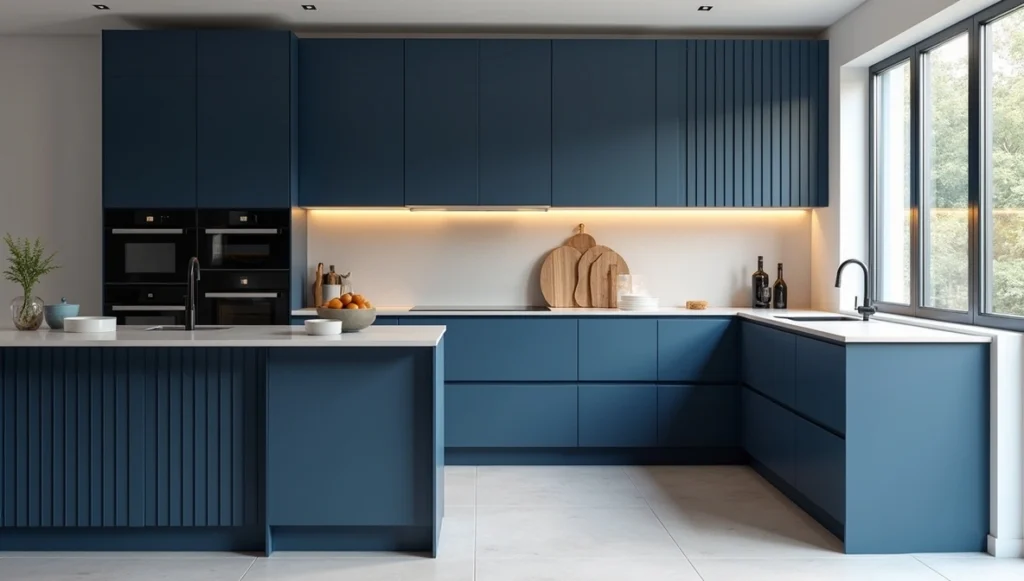
Furniture Choices That Matter
Every piece needs to justify its existence. Not just “it looks cool” but “this makes my life better somehow.” I have clients obsess over getting the perfect Eames chair, and sure, they’re beautiful. But if you’re six-foot-four and it’s uncomfortable, buy something else. Good design serves you, not the other way around. Same with those low platform beds everyone thinks they need. If you have bad knees or you’re over sixty, get a regular height bed. Being modern doesn’t mean being uncomfortable.
Common Disasters (and How I Fix Them)
The Showroom Problem: Everything matches perfectly. Same finish on all the metal. Same wood tone throughout. Identical heights on furniture. It looks like a catalog, not a home.
Fix: Mix materials thoughtfully. Use different wood tones that complement each other. Vary textures and heights. Make it look like people chose pieces over time.
The Instagram Trap: Designing for photos instead of living. Those perfectly styled floating shelves with three objects placed just so? Nobody lives like that.
Fix: Design for Tuesday afternoon, not Saturday morning. Include real storage for real stuff. Leave space for life to happen.
The Beige Explosion: Everything neutral because “timeless.” But there’s a difference between timeless and boring.
Fix: Neutrals work as backgrounds, not foregrounds. Add personality through art, plants, books, collections. Things that matter to you.
Room by Room Reality
Living Rooms for Living
Sectional sofas work great for families. L-shaped arrangements create conversation areas naturally. Just make sure you can walk around them – I’ve seen too many rooms where you need to climb over furniture to reach the kitchen.
Coffee tables should be about sixteen inches from the sofa. Closer and you’ll bang your knees. Farther and you can’t reach your drink. These details matter when you actually use the space.
Multiple light sources beat one overhead fixture every time. Table lamps, floor lamps, maybe some uplighting behind furniture. You want options for different times of day and activities.
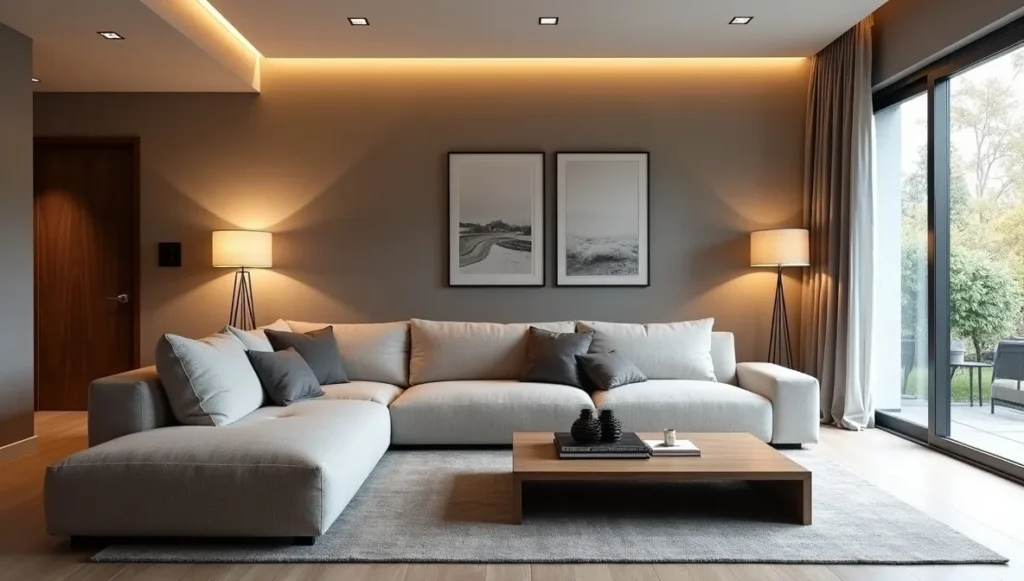
Kitchens for Cooking
Island size depends on your room, not what looks good online. I’ve installed islands that seemed perfect in drawings but blocked all the traffic flow. Measure twice, install once.
Handle-less cabinets look sleek but get grimy. Everyone touches the cabinet faces to open doors. Either plan for extra cleaning or choose simple hardware that’s easy to wipe down.
Appliance packages aren’t mandatory. A beautiful range deserves to stand out. Boring appliances can blend in. Mix and match based on performance and budget, not matching model numbers.
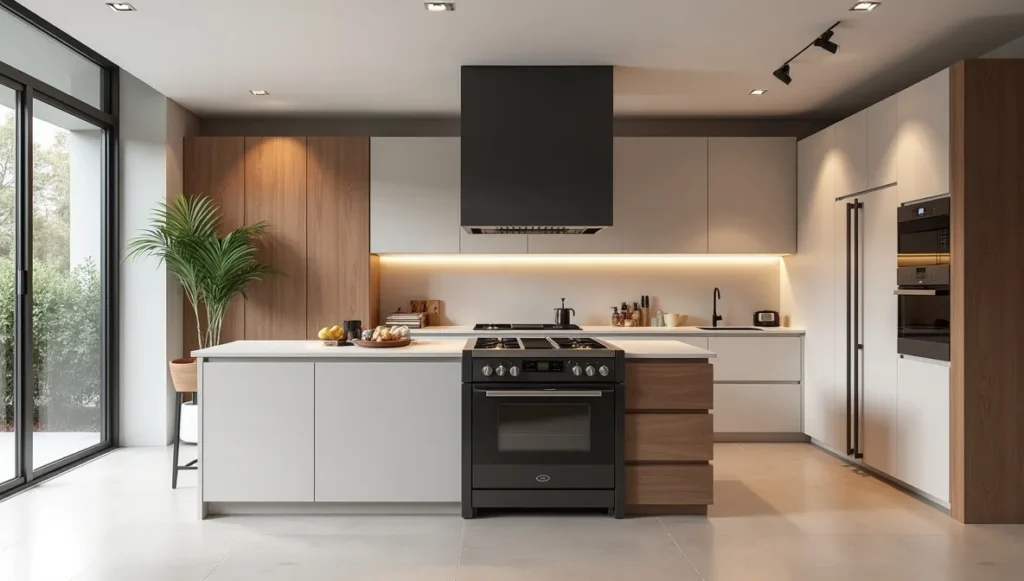
Dining Rooms That Function
Round tables work better in square rooms. Rectangular tables need rectangular spaces. Seems obvious, but I’ve squeezed round tables into narrow rooms and watched people constantly bump into walls.
Chair comfort matters if you want people to linger over meals. Test before buying. Some modern chairs look amazing but feel terrible after twenty minutes.
Lighting over dining tables should hang about thirty inches above the surface. Higher and it doesn’t illuminate the food. Lower and tall people hit their heads.
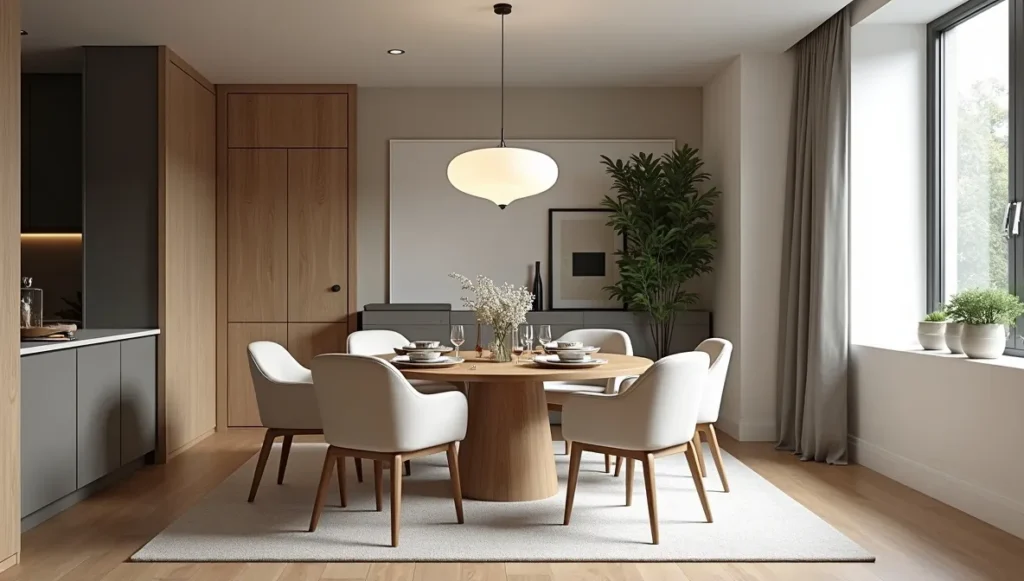
Bedrooms for Sleeping
Platform beds look great in photos but collect dust underneath. Regular beds with legs let you vacuum easily. Small detail, big difference in real life.
Blackout capabilities matter more than perfect aesthetics if you’re a light sleeper. Beautiful sheer curtains won’t help if street lights keep you awake.
Enough storage for your actual belongings, not some minimalist fantasy. If you own fifty t-shirts, plan for fifty t-shirts.
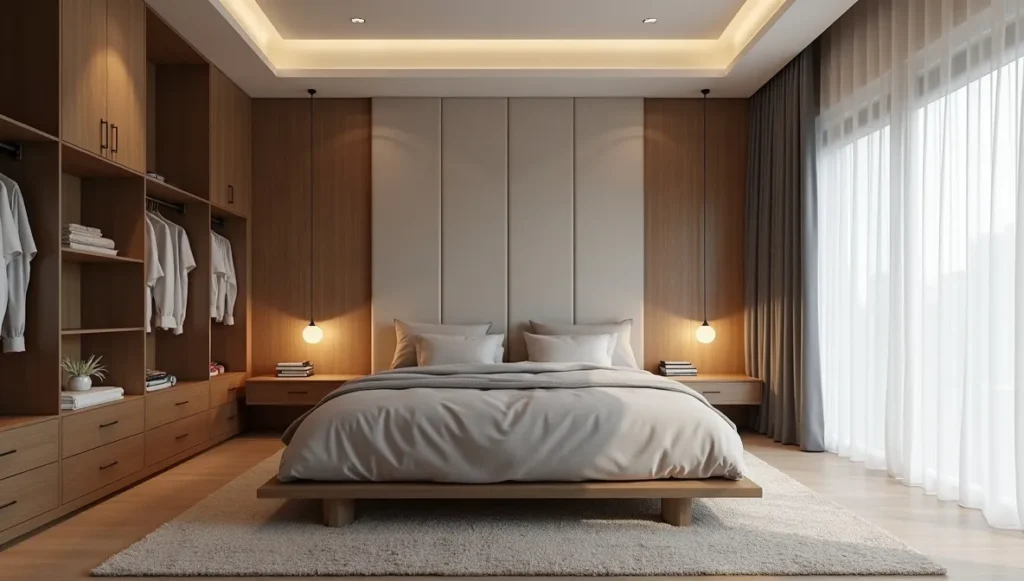
Home Offices That Work
Dining tables make terrible desks for daily use. Wrong height for typing. No cable management. Uncomfortable chairs. If you work from home, invest in proper workspace furniture.
Natural light is great but screen glare is real. Position monitors perpendicular to windows when possible. Add adjustable task lighting for cloudy days.
Storage for supplies keeps work materials organized and hidden when you’re done. Built-ins work great but even attractive containers can solve the problem.
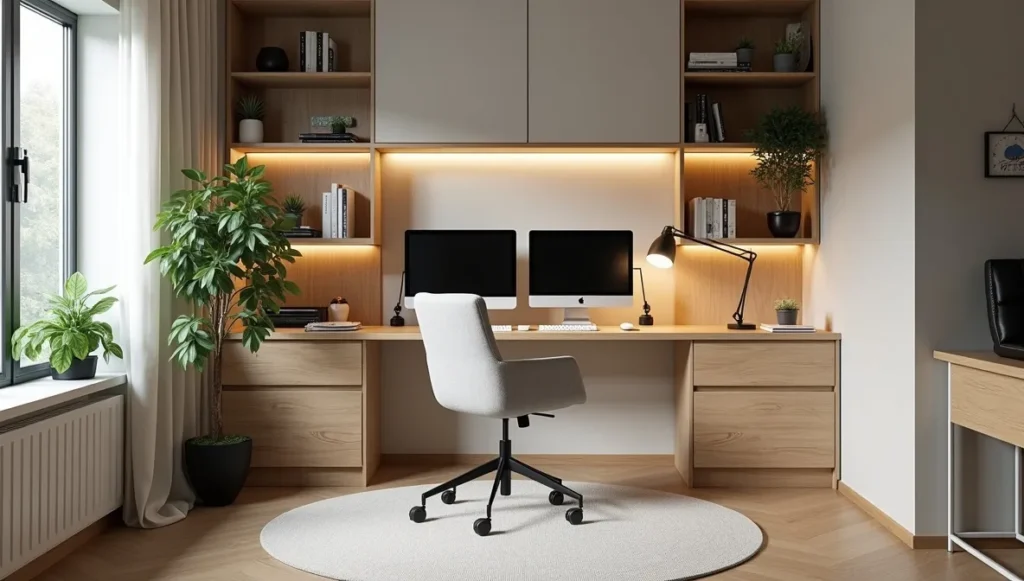
Bathrooms for Daily Use
Large format tiles = fewer grout lines = easier cleaning. Practical trumps trendy every time.
Floating vanities look modern but mounting them properly is critical. I’ve seen too many sag after a few years. Hire someone who knows what they’re doing.
Shower doors stay cleaner than curtains and make small bathrooms feel larger. Just budget for good quality hardware – cheap shower doors are penny wise, pound foolish.
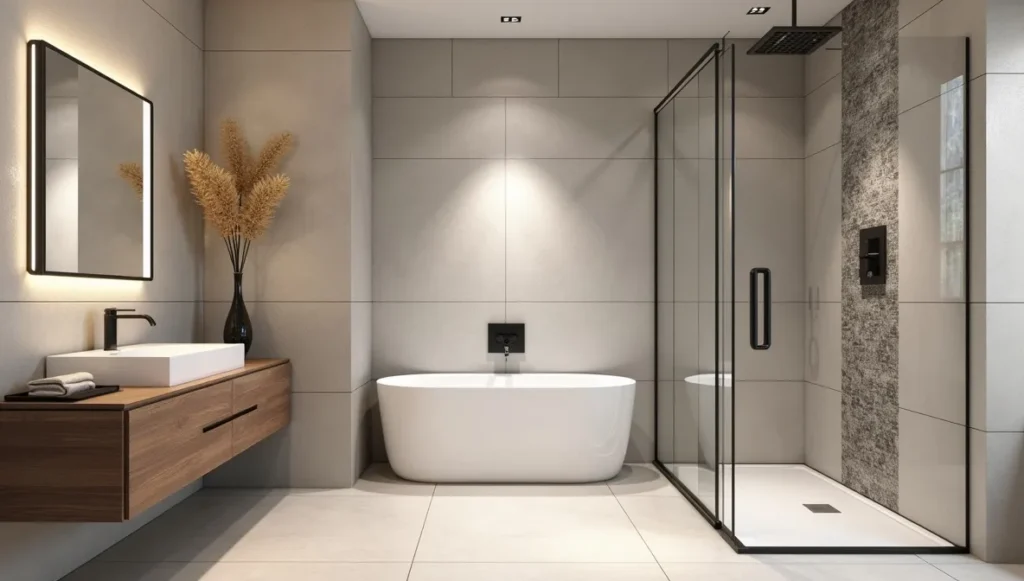
Kids’ Rooms That Evolve
Theme rooms become embarrassing faster than you think. Eight-year-olds love dinosaurs. Thirteen-year-olds, not so much. Stick with backgrounds you can live with for years.
Storage at kid height encourages organization. High shelves just collect dust and toys they can’t reach.
Quality furniture costs more upfront but lasts through multiple children. Hand-me-down furniture works fine if it’s well-made.
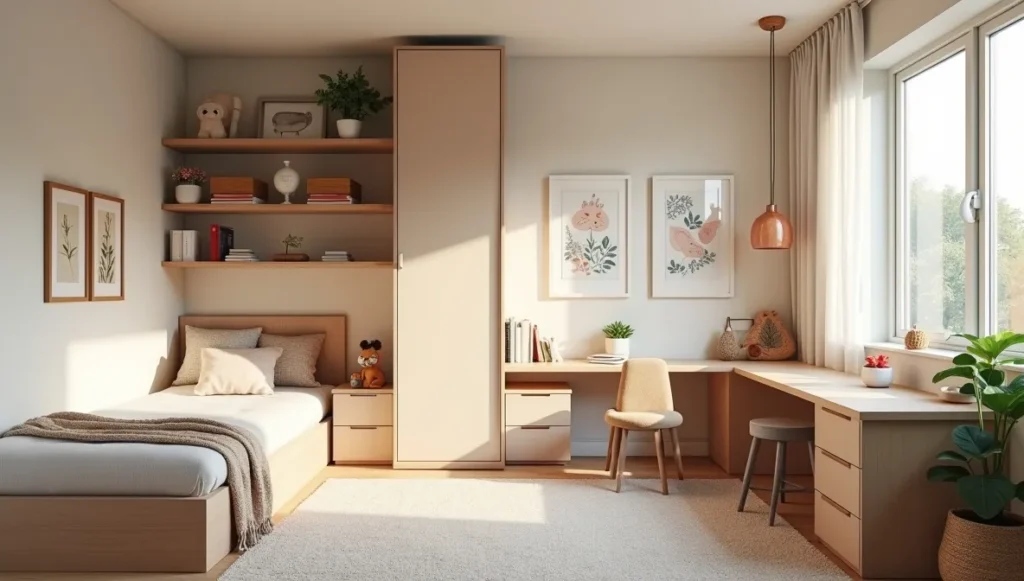
Entryways That Welcome
Console tables need to handle keys, mail, sunglasses – the real stuff people dump when they walk in. Pretty styling is nice but function comes first.
Good lighting makes everything look better and helps you find things. Especially important if your entry doesn’t have natural light.
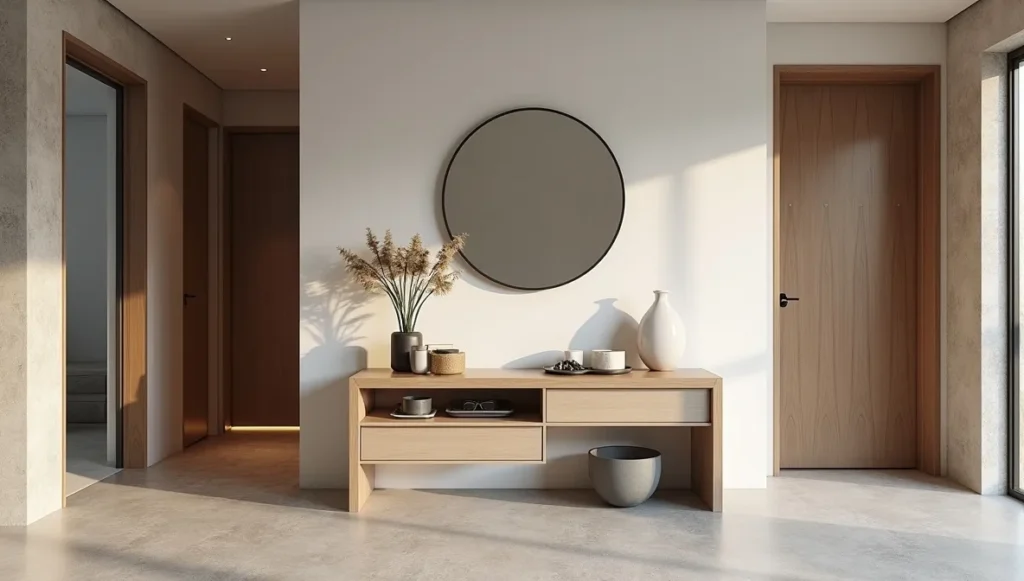
Utility Rooms Worth Using
Laundry rooms get ignored in design budgets, but you spend time there. Adequate lighting, folding space, and storage make chores less annoying.
Upper cabinets maximize storage without taking floor space. Lower cabinets work too but plan for bending and reaching.
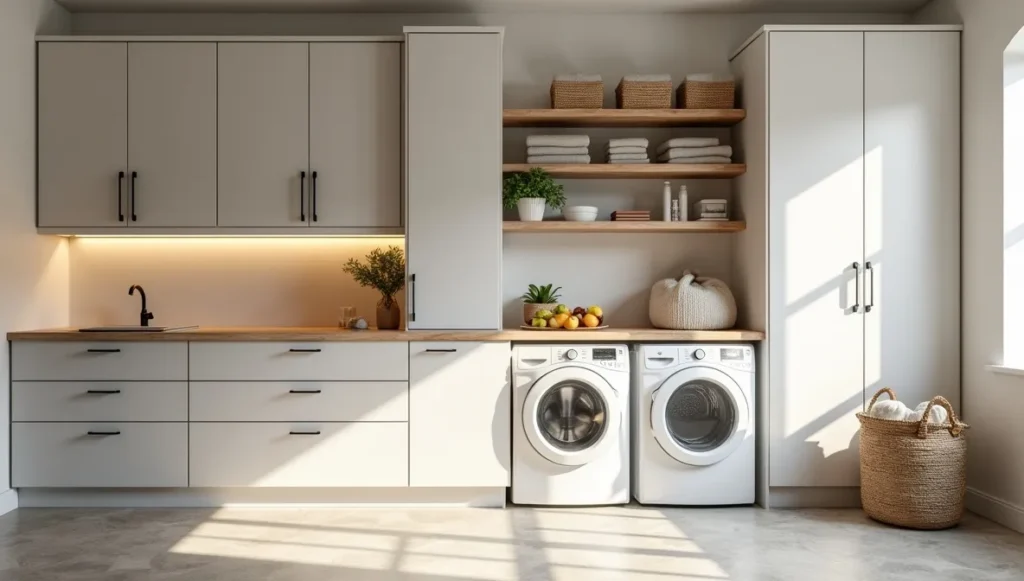
Making It Personal
The fear everyone has: modern design will erase their personality. Not true, but you need strategy.
Collections work when displayed intentionally. Group similar items together. Use consistent containers or frames. Edit ruthlessly – not everything needs to be visible.
Color adds personality without permanent commitment. Paint is cheap and changeable. Pillows and art can shift with your moods. Keep expensive items neutral.
Family photos belong in modern homes. Frame them consistently, group them thoughtfully, and they become design elements instead of clutter.
Sustainable Choices
Twenty years ago, clients rarely asked about environmental impact. Now it’s standard conversation.
Reclaimed wood adds character and reduces waste. Energy-efficient windows and appliances save money long-term. Low-VOC paints and finishes improve indoor air quality.
But don’t sacrifice function for environmental ideology. A well-made conventional piece that lasts twenty years beats a eco-friendly item that breaks in two.
Technology Integration
Modern homes need modern infrastructure. Plan for charging stations, hidden wiring, integrated audio. Technology changes fast, but good planning accommodates upgrades.
Smart home systems can simplify daily life when done thoughtfully. Automated lighting, climate control, security – but keep manual overrides for when technology fails.
Budget Reality
Good design doesn’t require unlimited money, but it does require priorities. Spend more on pieces you use daily – seating, beds, work surfaces. Save on decorative items you can upgrade later.
DIY works for some projects but know your limits. Electrical, plumbing, and structural work need professionals. Paint, hardware, and simple installations are often manageable.
Shopping sales and outlets can provide quality pieces at better prices. Just avoid buying things you don’t need just because they’re discounted.
What I’ve Learned
Modern design principles work because they’re based on how people actually live. Function matters. Quality matters. Comfort matters.
But rules exist to be broken intelligently. If something works for your family but violates design theory, choose what works. Your home should serve you, not impress strangers.
The best modern homes feel effortless, but that effortlessness comes from careful planning and attention to details. Every element serves a purpose, even if that purpose is simply making you happy.
Start with one room. Get the lighting right, choose furniture you love, organize your stuff thoughtfully. Build from there.
Most importantly, live in your space while you’re improving it. You’ll discover what works and what doesn’t through daily use. Theory is great, but experience teaches the real lessons.
